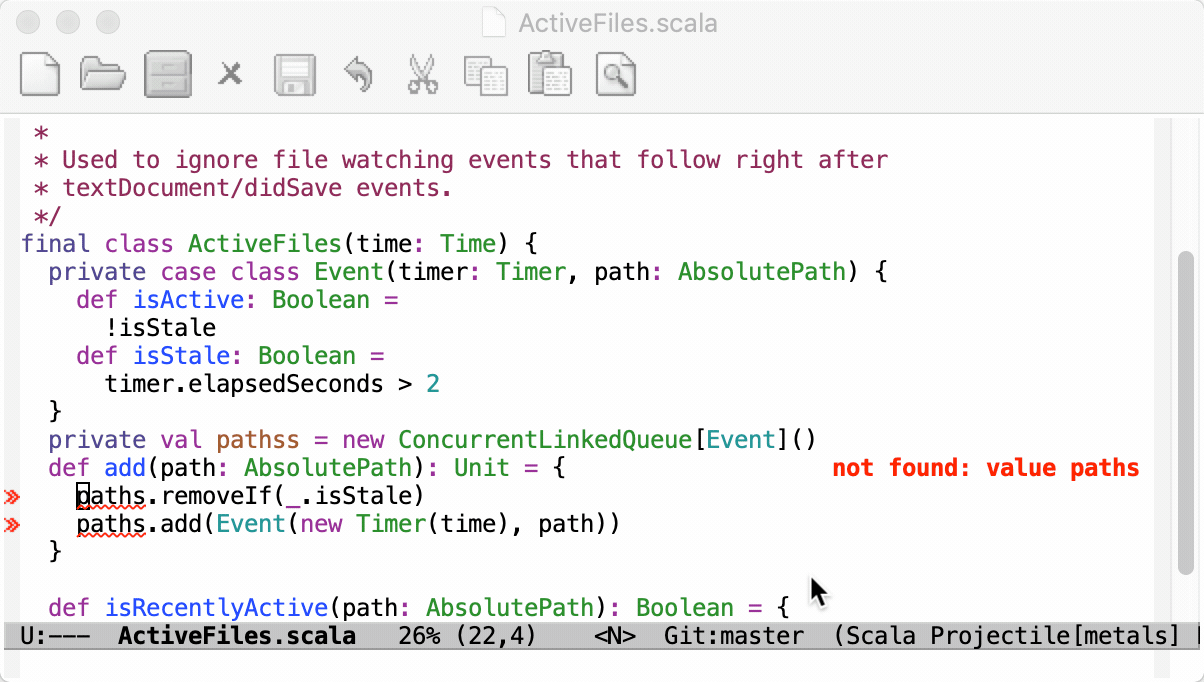
Full disk access does not apply to Emacs because the permissions were not granted to /usr/bin/ruby.# but it won't take advantage of any of the features in 10.9.Īlthough this never caused problems on prior versions of macOS, here, it is responsible for both of these issues: If you compile it on 10.6, then it will also run on 10.9, # Emacs on 10.9 then it will contain hard-coded calls to 10.9 APIs and will # feature detection at compile time instead of at run-time. # Why are there multiple x86_64 binaries? Because the Emacs source does OS # each architecture and Emacs has multiple x86_64 architectures binaries. # Why not just use a fat binary? Because fat binaries can only hold 1 of
Emacs for osx mac os x#
# binaries for all supported Mac OS X versions. It exists so that there can be a single download that contains # This launcher code is from and is not part of Emacs Unfortunately, this method stopped working, too.Īs it turns out, the binary embedded in Emacs.app is…actually not a binary. It’s often quicker than finding the icon via cmd-tab. I commonly switch between applications on macOS by pressing cmd-space to bring up Spotlight, then the first few letters of the application name, and finally return. Issue 2: Spotlight Can’t Bring Emacs to the Front
Emacs for osx upgrade#
Solving this is directly related to the second issue that’s been nagging me since the upgrade to Catalina. After doing this, I still couldn’t access my documents folder. It’s pretty easy: Go to the Security section of System Preferences, find Full Disk Access in the list, and then add Emacs:īut…this solution didn’t work. You, the user, can provide this privilege to an application, and it is allowed to access all files that your user would otherwise be able to access. This means that, because it doesn’t even ask for permission, Emacs is simply forbidden from accessing certain files.Īpple did provide an escape hatch: Full Disk Access. Catalina now enforces these permissions at the filesystem APIs, as well. Rather than using APIs to, say, access your contacts, you could just read the contact database via the filesystem. These prompts were displayed when using special APIs designated for those purposes.Īlas, there was an easy way to bypass these prompts. Here’s the gist of why this exists: In a previous version, macOS started displaying user prompts (similar to iOS) to grant application permission for accessing things like contacts, photos, location, etc.

This is a ramification of the User Data Protection enhancements that were made in Catalina. Issue 1: I Couldn’t Access Certain FoldersĪfter the upgrade, Emacs was unable to access special folders, like the Documents folder. Here’s a little insight into how I fixed them. Since the upgrade to macOS Catalina, I’ve had two serious annoyances with Emacs.


 0 kommentar(er)
0 kommentar(er)
